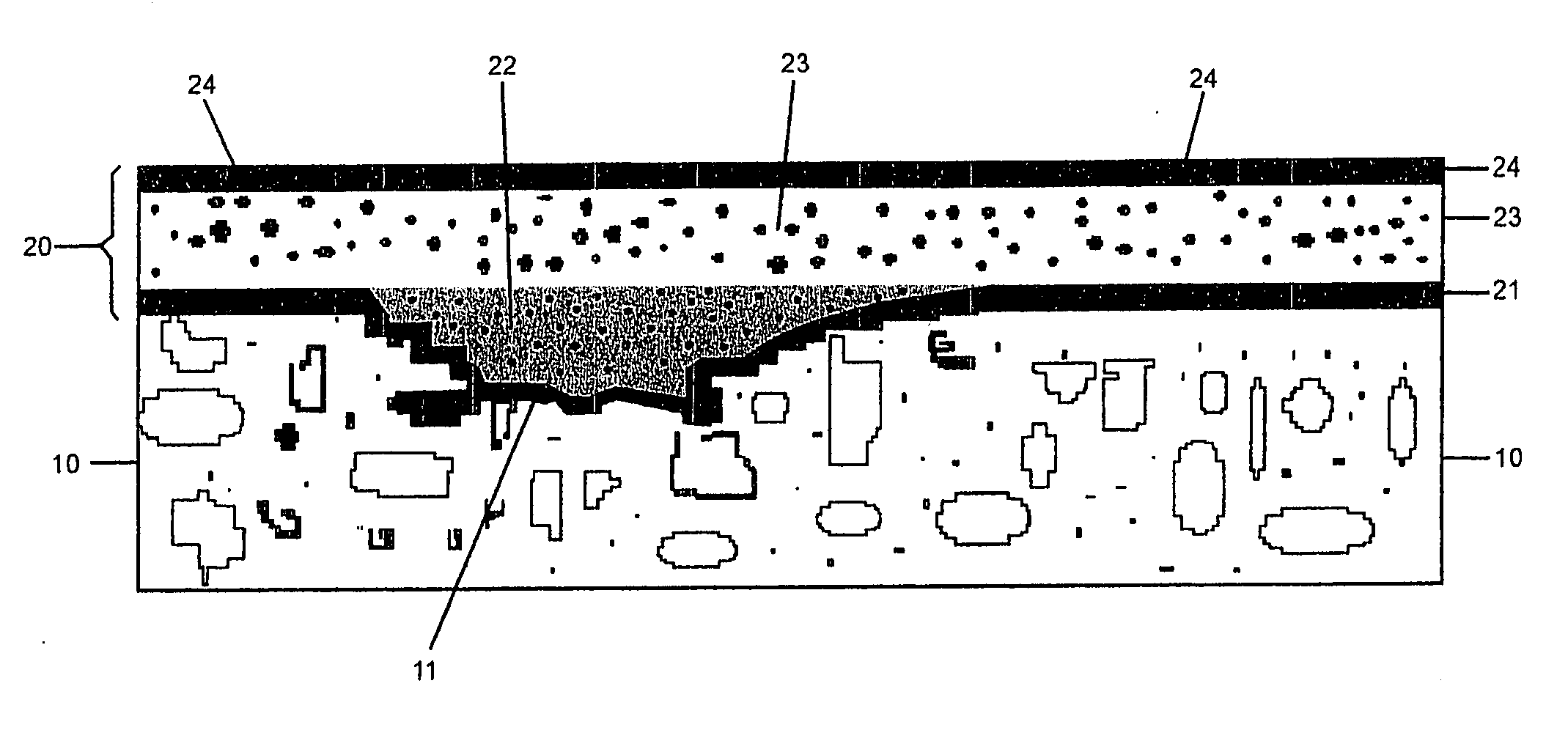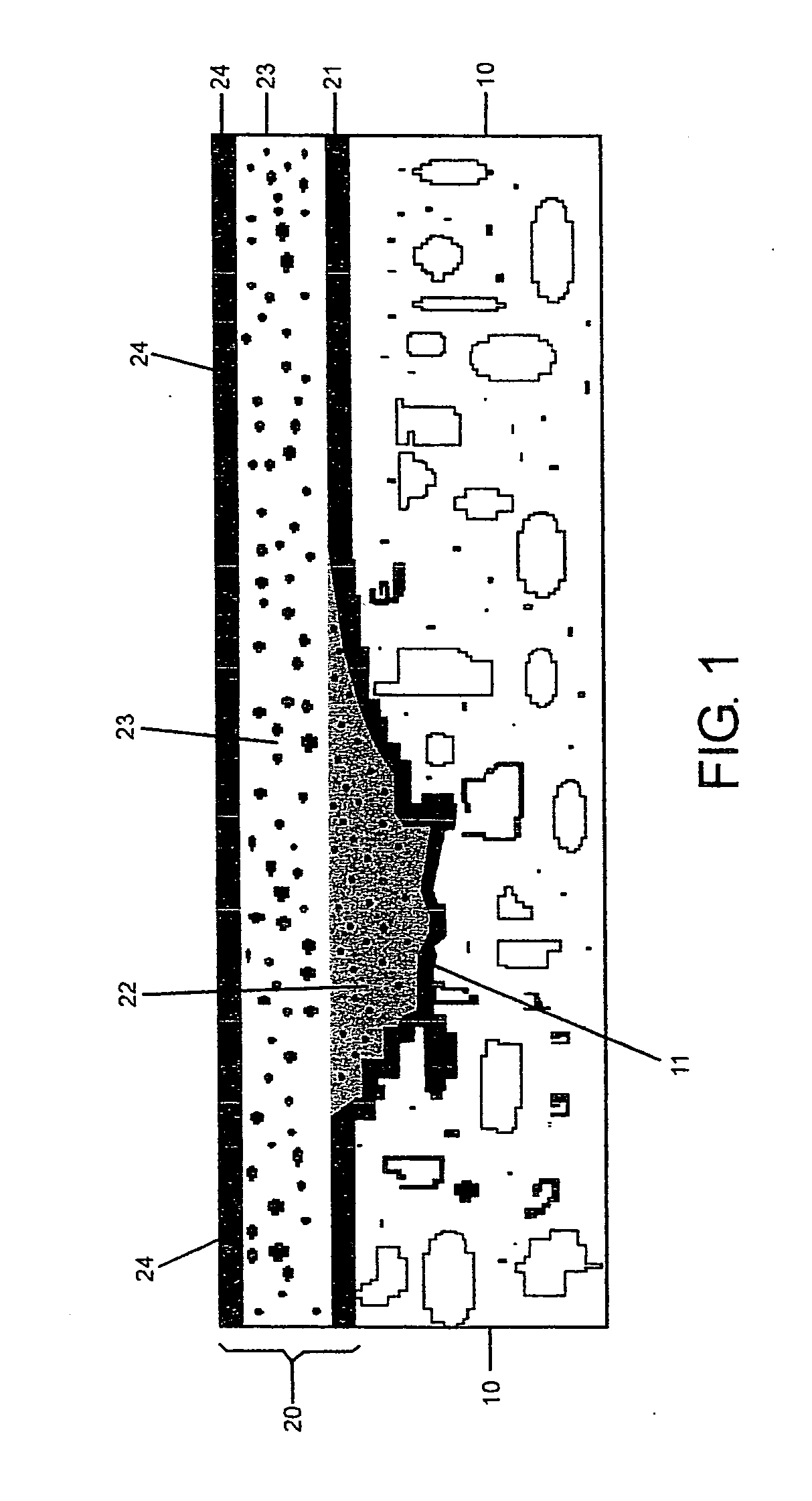Polymeric Resin Composition For the Production of Coatings
a polymer resin and composition technology, applied in the field of coating manufacturing, can solve the problems of floor surfaces constantly exposed to damage, deterioration of joints, surface wear, etc., and achieve the effect of cost and maintenance savings and efficient chemical attachmen
- Summary
- Abstract
- Description
- Claims
- Application Information
AI Technical Summary
Benefits of technology
Problems solved by technology
Method used
Image
Examples
example 1
Formation of a Coating System Including a Polymeric Concrete Layer and a Finish Layer
[0053]A polymeric coating constituted by a primer layer; a pothole composition layer; a polymeric concrete and a finish was formed on a 30 m2 surface concrete floor in an industrial facility. Said floor was made of squared concrete slabs with cracks and cavities visible to the naked eye. Additionally, joints between slabs were notoriously worn out.
[0054]In order to form each one of the polymeric coating layers by use of the resin composition of the present invention, the concrete surface was initially cleaned and prepared with a shot blast, which rendered the floor surface a rough and clean texture in order to apply the primer layer as the initial layer.
[0055]The resin composition used for the primer is shown in Table 1.
TABLE 1Resin composition for the primer layerCOMPONENTWEIGHT %Methyl methacrylate (MMA) monomer47.5Mixture of equal parts of polyester47.5resinsEpoxy resin1.5Aliphatic polyurethane r...
example 2
Formation of a Polymeric Terrazzo
[0066]A polymeric terrazzo was made on a 5-year old concrete floor and a general good appearance, which nevertheless was used to improve its aesthetic look. The floor surface covered was 12 m2.
[0067]In order to make the terrazzo, a series of steps were followed starting with preparation of the floor (substrate) with a road scraper, thereby achieving a rough, dry and clean surface. Afterwards, 4 Kg. of a resin composition from the present invention were prepared for use as a primer on the clean surface. The primer composition in particular was that shown in table 5 below.
TABLE 5Resin composition for the primer layerCOMPONENTWEIGHT %Methyl methacrylate (MMA) monomer47.63%Mixture of equal parts of polyester50.13%resinsDimethyl aniline and / or N,N-dimethyl1.25%paratoluidine mixtureDibutyl-paracresol and hydroquinone0.09%mixtureParaffin0.90%Total100
[0068]All the components from table 5 were mixed thoroughly with an electromechanical agitator and benzoyl pe...
PUM
| Property | Measurement | Unit |
|---|---|---|
| particle size | aaaaa | aaaaa |
| particle size | aaaaa | aaaaa |
| time | aaaaa | aaaaa |
Abstract
Description
Claims
Application Information
 Login to View More
Login to View More - R&D
- Intellectual Property
- Life Sciences
- Materials
- Tech Scout
- Unparalleled Data Quality
- Higher Quality Content
- 60% Fewer Hallucinations
Browse by: Latest US Patents, China's latest patents, Technical Efficacy Thesaurus, Application Domain, Technology Topic, Popular Technical Reports.
© 2025 PatSnap. All rights reserved.Legal|Privacy policy|Modern Slavery Act Transparency Statement|Sitemap|About US| Contact US: help@patsnap.com


